#yellow-bellied sapsucker
Text
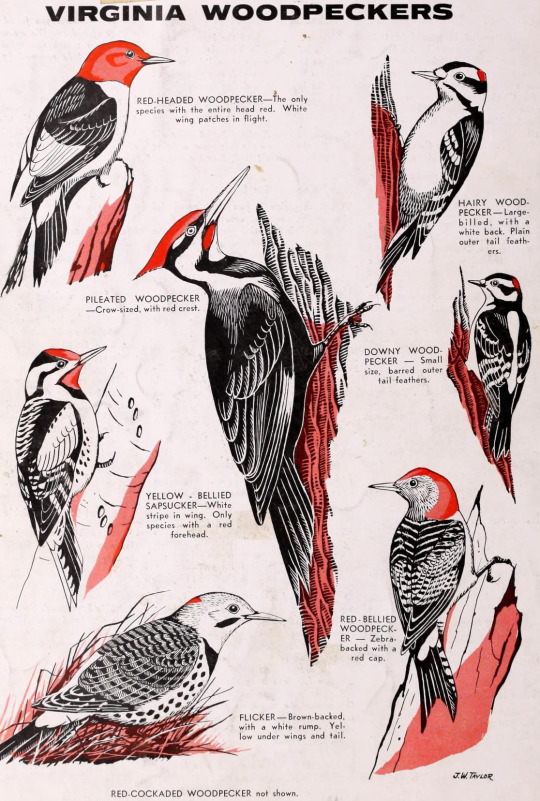
Virginia Wildlife; vol. 19, no. 9. September, 1958. Illustration by John W. Taylor.
Internet Archive
#birds#woodpeckers#red-headed woodpecker#hairy woodpecker#pileated woodpecker#downy woodpecker#yellow-bellied sapsucker#northern flicker#red-bellied woodpecker#John W. Taylor
344 notes
·
View notes
Text
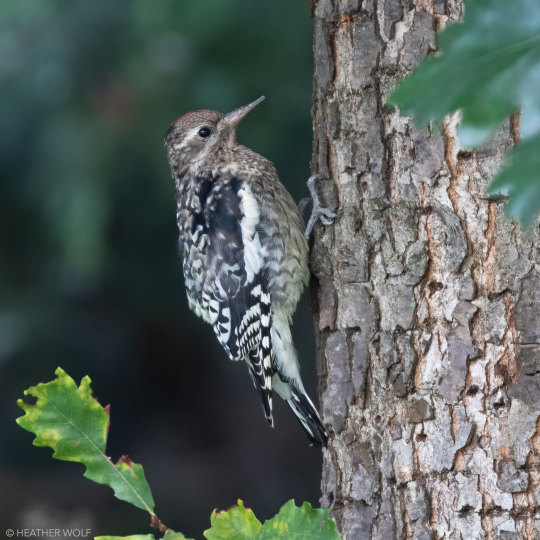
Happy Friday! Here's Yellow-bellied Sapsucker in Brooklyn Bridge Park, Pier 3.
#birds#birding#urban birding#nuts_about_birds#birdstagram#patch birding#nature blogger#nyc nature#brooklyn#brooklyn bridge park#nyc#nature#migration#yellow-bellied sapsucker#sapsucker#woodpecker
116 notes
·
View notes
Photo

Yellow-bellied Sapsucker
This secretive woodpecker pecks holes in trees as seen here and collects the sap as it flows into these holes.
230 notes
·
View notes
Text



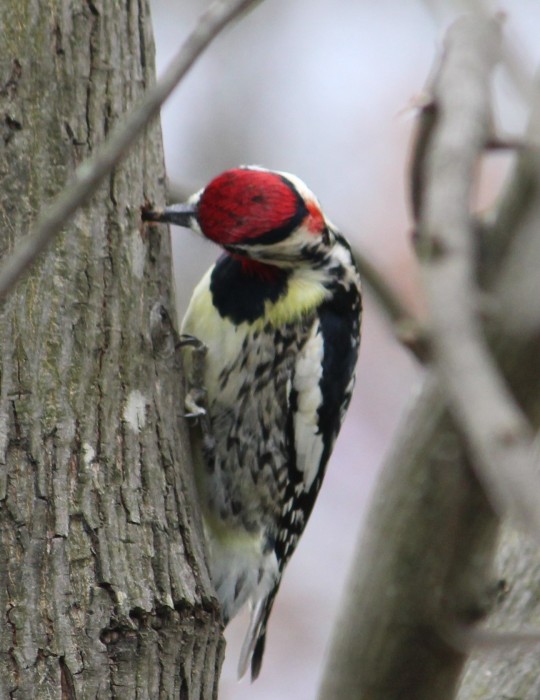
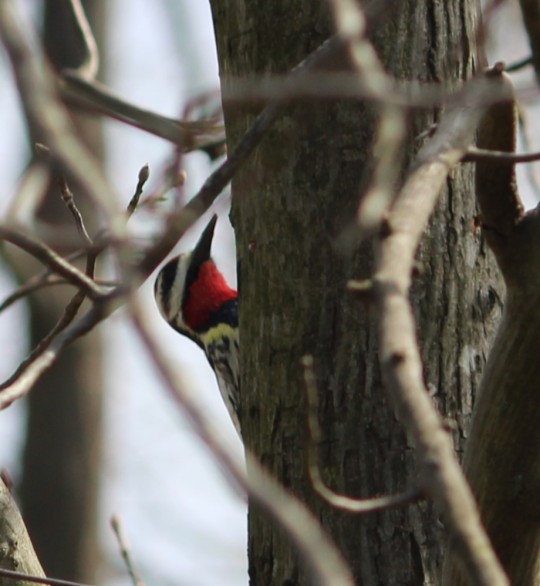
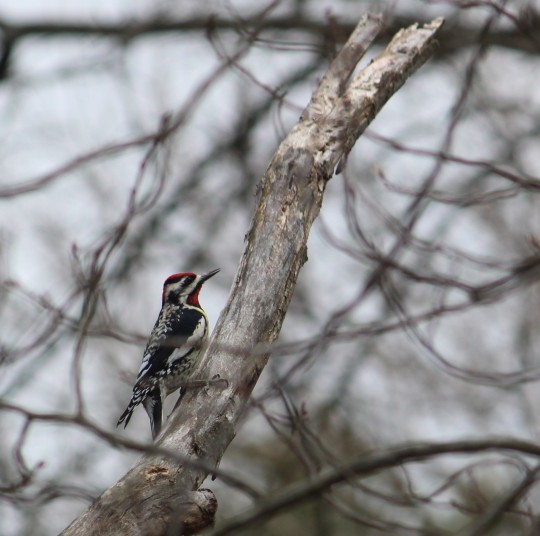
Yellow-bellied Sapsucker
#birds#woodpeckers#yellow-bellied sapsucker#my pictures#evidence points to this being an annual visitor
10 notes
·
View notes
Text

Find that woodpecker!!
Give up? Let's look at him from the side:

Yep, it's our old friend Mr. Y.B. Sapsucker! Still hanging out here in Virginia as we head into March. Although there are lots of yummy trees around for him to peck holes into, he did make a pit stop at the suet feeder.


8 notes
·
View notes
Photo
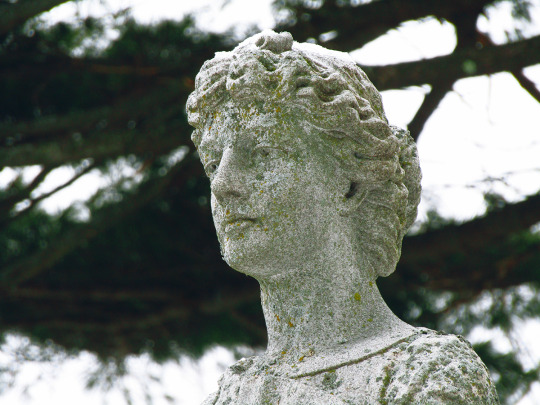




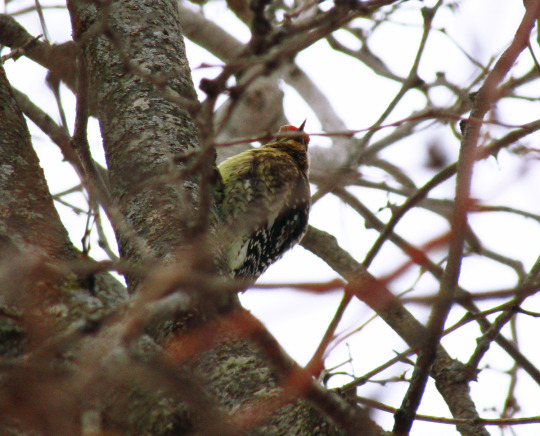



12/17/22 Greenwood Cemetery
sick with covid, so i missed my first bird count in like 7 years (i forgot exactly how long i’ve been doing this). had a little consolation bird endeavor at the local cemetery though and still saw some nice stuff.
#nature#cemetery#birds#winter#snow#nature photography#wildlife photography#bird photography#blue jays#yellow-bellied sapsucker#black-capped chickadee#squirrel
4 notes
·
View notes
Text

10 notes
·
View notes
Photo

Yellow-bellied Sapsucker
At the same wetland I spotted the Sandhill Cranes, I briefly spotted what I thought was a Hairy Woodpecker at first - black and white, red cap - but then I realized the pattern was different and it had red on the front of its face below the beak. I raced around the brush, trying to get a better look - and a picture! But it was too quick - as soon as I thought I had an angle and zoomed in on the spot - it was gone!
I’d almost completely forgotten about it until I got home and was downloading pictures for the day and found all the pictures of empty branches of dead trees surrounding the marsh and remembered the bird. I asked Amanda if she knew of a woodpecker with red on it’s face below the beak - like a chin or a bib - and off the top of her head she said “Yellow-Bellied Sapsucker”…? I looked it up and, sure enough, that was the bird I’d been looking at.
I am so damned grateful to have her in my life… for so many reasons… not the least of which is how much she knows about birds (Which is far, FAR MORE than I think she gives herself credit for at times...!)
5 notes
·
View notes
Text
Favorite Bird Photos from March '24
Pied-billed Grebe
Mallard (male)
Pileated Woodpecker
Brown-headed Nuthatch
Wood Duck (male)
Barred Owl (getting sleepy)
Barred Owl–napping in the sun
Eastern Towhee
Belted Kingfisher
Northern Flicker (male)
Juvenile Barred Owl taking a nap
Yellow-bellied Sapsucker
Bald Eagle
Wood Ducks. Very cloudy day, so hard to get great pictures of these ducks in a tree. There are two pairs…

View On WordPress
#bald eagle#barred owls#belted kingfisher#bird photography#Birdwatching#brown-headed nuthatch#ducks#eagles#eastern towhee#great egrets#hawks#mallards#Nicodemus of the Holy Mountain#northern flicker#Pileated Woodpecker#red-shouldered hawk#wood ducks#woodpeckers#yellow-bellied sapsucker
0 notes
Text
We have a bird playing on our skylight window.
8K notes
·
View notes
Text
Yellow-bellied Sapsucker in Provincetown 04/02/23

View On WordPress
0 notes
Text





Yellow-bellied Sapsucker on a Magnolia Tree in North Carolina...
#yellow-bellied sapsucker#sapsucker#nature photography#wildlife#wild birds#backyard nature#bird#bird watching
1 note
·
View note
Text
Find More Birds by checking tree trunks! If a tree has neat horizontal rows of holes, a sapsucker has visited and has clued you into one of its favorite "restaurants!" Check back often for a chance to see these carpenters at work.😀
#birds#birding#urban birding#nuts_about_birds#birdstagram#patch birding#nature blogger#nyc nature#brooklyn#brooklyn bridge park#nyc#nature#migration#sapsucker#woodpecker#yellow-bellied sapsucker
79 notes
·
View notes
Text
Life on Vestal

You would think in the midst of town – albeit the edge of town – that animal life would not be as abundant. However, that is not the case. I know I have written extensively about my nemesis – the rabbit – but we have other creatures hiding about. You just have to take time to notice.
For example, deer tend to come into tow. It used to be that they mainly only came in during the winter when it was quieter. In summer, they tended to shy away from more crowded areas though not exclusively. Now, with more building outside of town, they come in more often, and year-round, because there are some good pickings for food. A few weeks ago, I walked into the Mitchell House backyard and the first thing I notice was a smell. It was the distinctive smell of ivy that’s been cut. I looked down and noticed that the ivy along the hedge had been eaten – the leaves nipped off and the stems left behind. Now deer never used to eat ivy. This is a more recent phenomenon that I have noticed over the last few years. In some places, over the course of a winter, they eat ALL the leaves off exposing the old vines along the ground and on trees and even revealing ancient picket fences that look like they may fall over without the ivy and which haven’t seen unfiltered sun in many, many years. So far, the ivy has come back each spring and while it’s an invasive nuisance it does help to hide bare spots where other things won’t grow – or hold up an ancient fence. (The deer also left me a deposit. I guess her or his way of a thank you – ha.)
Then there was the Red-bellied Woodpecker. I was sitting at a meeting facing out into the office driveway area and noticed him on the tree. He pecked and hopped about the trunk and then stuck his head slowly, several times – going more deeply each time – into a hollow in the tree that likely someone else had made. Finally, he hopped into it and remained inside for the length of my meeting, occasionally popping his beak out ever so slightly. A nice accommodation for the winter. If you are not familiar with the Red-bellied, I include an image here – they have quite the bright red patch on the back of their heads, which makes them instantly recognizable, and always a shock when you catch that glimpse of red.
At the MMA, we have a wonderful stand of cedars on the west side of the MMA Research Center and they attract all sorts of interesting birds, Cedar Waxwings among my favorites. The trees on the MMA grounds are a mecca for all sorts of birdlife, including my first Brown Creeper about a dozen or so years ago, and on and off a Yellow-bellied Sapsucker up in the gingko tree that one of our former board members and the former director of the UMASS Field Station gave us, Wes Tiffney.
As my friend and mentor, Edith Andrews, always said, “If you don’t look, you don’t see. You have to go and look.”
JNLF
#Nantucket#Maria Mitchell#Nantucket Maria Mitchell Association#Red-bellied woodpecker#1 Vestal Street#Brown Creeper#MMA Reseacrh Center#Yellow-bellied Sapsucker
0 notes
Photo

A new variant has been added!
Yellow-bellied Sapsucker (Sphyrapicus varius)
© Gustav Mützel
It hatches from absent, black, brownish, complete, difficult, disheveled, eastern, extensive, hairy, irregular, long, male, messy, nasal, other, overall, red, similar, solid, striking, unmistakable, various, white, wooded, and yellow eggs.
squawkoverflow - the ultimate bird collecting game
🥚 hatch ❤️ collect 🤝 connect
0 notes
Text


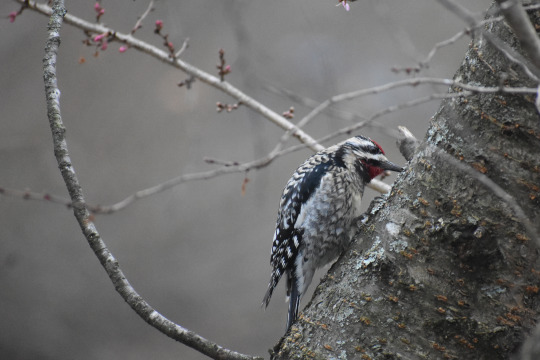
A special treat today, this yellow-bellied sapsucker on the cherry tree right outside the front window!!
I've been seeing these lads around a lot lately. I'd say their size is comparable to the hairy woodpecker, maybe a bit smaller and chunkier. This part of Virginia would be the very northern edge of their winter range, so they may have wintered here or they are just passing through on their way back north. Normally I only ever see male sapsuckers, though I have seen a female once. Apparently the females tend to travel further south than males... these birds will fly as far south as Panama!
I know we must have sapsuckers staying here at least part of the year, as there is a hickory tree in the front yard that is absolutely striped from bottom to top with sapsucker holes:


The holes are several years old though, as indicated by the bark growth over them, and the tree itself seems none worse for the wear. I can't imagine just one bird did all this over one winter!
7 notes
·
View notes